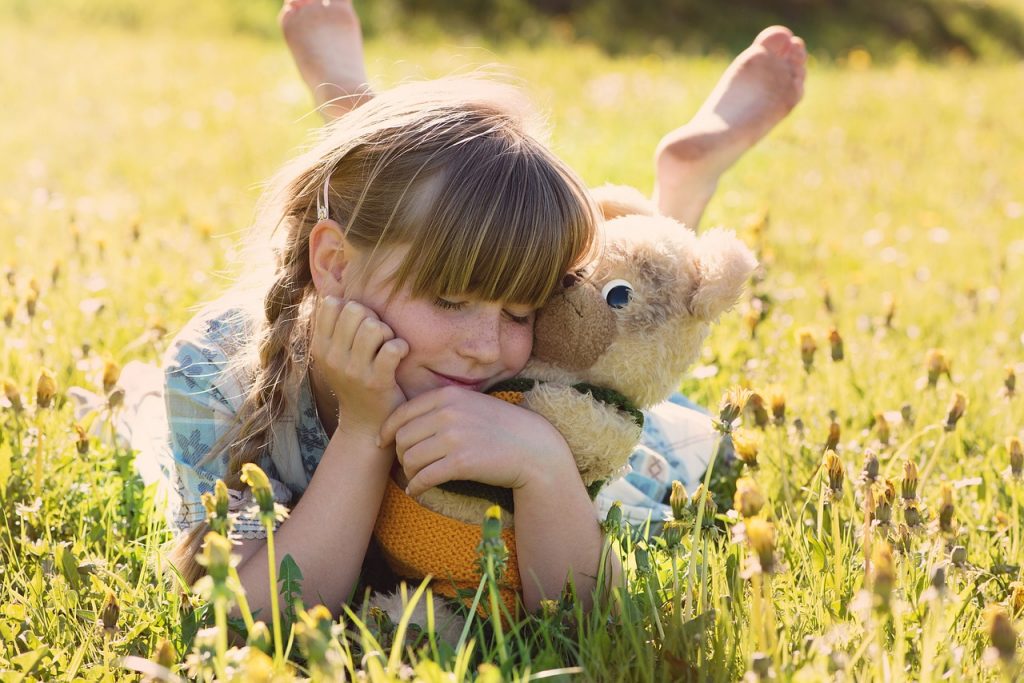Bucket filling has provided a new vocabulary for talking about emotions and mental health, but what is bucket filling and why is it so popular?
Introduction to Bucket filling
No, we are not talking about sand and water play here when we’re talking about filling buckets. In many day care centres, preschools and primary schools across the globe, the concept of ‘bucket filling’ has become widely used and recognised as an effective scaffold for learning about feelings. A quick Google search will reveal pages and pages of blog content and resources that support educators and parents to learn about bucket filling and why it is such an effective strategy for helping kids learn about the incredibly important topic of mental health.
Here, you will find the answers to some of the most commonly asked questions about the bucket filling concept, learn how to fill your own bucket and how to become a bucket filler yourself.
What is bucket filling?
Bucket filling is a term that has become a popular metaphor when talking about positive attitudes and behaviour. Many education settings use the concept of bucket filling to educate children about feelings and emotions. The underlying message is that each person carries with them an invisible bucket and when that bucket is full, the person is feeling happy, confident, secure, calm and content. On the other hand, if a person is carrying an empty bucket, they are feeling upset, down, dissatisfied and unhappy. The goal is to help individuals monitor and understand how full or empty their bucket is as a gauge for determining how they are feeling.

A ‘bucket filler’ is a person who behaves in a way that helps to fill another person’s bucket. By being kind, empathetic and compassionate – we can help fill other people’s buckets so that they too can feel better. Think of it as warm fuzzies! Filling someone’s bucket actually helps to fill our own bucket too!
A foundational aspect of the concept of bucket filling is that it allows children and adults to better express how they are feeling and to better understand how they have an impact on the way that others feel, thus improving emotional and social skills, encouraging positive behavior and improving self-regulation.
Once the concept is understood, it is easier to help children reflect on their words and actions and recognise how they are contributing to other people’s mental health and wellbeing.
Where did the idea of bucket filling start?
An ancient story that dates back to biblical times is centred around the idea that a reservoir that is full brings joy, wisdom and faith. In 1960, Dr. Donald Clifton borrowed from this story and published a book called “Dipper and Bucket”. This story morphed the idea of the reservoir into an invisible bucket and the publication of a second book, “How Full is Your Bucket?” by Tom Rath and Donald O. Clifton really gave the idea legs in terms of mental health education for children.
In the 1990’s the concept of bucket filling was noticed by Carol Mccloud, an early childhood educator. She then helped the idea gain greater traction with her own book in 2007, “Have You Filled a Bucket Today? A Guide to Daily Happiness for Kids”. Bucket Filling is now widely recognised right across the globe by kids, parents and educators of children of all ages, and in 2002 Dr Clifton was recognised by the America Psychological Association with a Presidential Commendation for his contributions to the field of positive psychology.

How do you fill a bucket?
You can fill someone else’s bucket by acting in a way that is supportive, helpful and kind. There are many ideas on ways to do this, some of which I have listed below. Helping someone who is struggling, paying someone a compliment, sharing storytime with your kids or showing someone that you care for them through kindness are all ways that you can express bucket-filling behaviour. It really is that simple. Simple kindness usually fills a person’s bucket.
Check out this YouTube clip to hear the story, Have You Filled a Bucket Today?
Here are some simple ways to fill someone’s bucket:
- A hug
- Share something with them
- Let them overhear you saying something kind about them to someone else
- Practice gratitude with them
- Use your manners
- Create ways to include them
- Think of something kind you can do for someone else and do it together
- Bake something for them, or bake together
- Write a thank you note
- Tell someone you are proud of them, with a specific reason why
- Leave sticky notes for someone, with kind messages on them
- Listen when someone needs you to listen
- Tell someone you love, that you love them
- Get creative! Get some markers, paints, crayons or pencils and make some art together!
- Smile
- Do something fun!
“Bucket filling is in the eye of the bucket holder, not the bucket filler. Fill their buckets with things that are important to them … not you”
David Cottrell

Here are 25 bucket filler ideas and activities for teachers, which can be used in child care or school.
What does a bucket symbolize?
The bucket itself represents a person’s mental and emotional self. The concept is incredibly simple, yet profound. It can be understood by a child as young as two years old and also works with children, teens and adults. Understanding how the bucket works helps us see the motivation behind behaviour and shows us that when our own buckets are low, we tend to dip into another person’s bucket.
When we know that we have the power to be bucket fillers, it can change the way we interact with others whilst also recognising the importance of self-care.
What is a bucket filler vs bucket dipper?
Whilst a bucket filler does their best to help others feel better, bucket dippers do the opposite. Bucket dippers use actions, words and behaviours that have a negative impact on others. Some behaviours that fall into bucket dipping include teasing, saying unkind things and refusing to help someone else. Bullies are definitely bucket dippers but often they do this because it’s a sign that their own buckets are particularly low (You can read my article on Bullying here).
This means that helping fill the bucket of a bully might help them stop dipping into the buckets of others to make themselves feel better. It is here that we can see how this concept can support self-reflection and a sense of personal responsibility for behaviour and actions from a very young age.

What does “Use Your Lid” Mean?
With the bucket representing a person’s emotional and mental health, it is also very important to learn how to protect the good thoughts and feelings that have been gathered. The concept of using a ‘lid’ refers to placing a mental shield over things that might dip in and take from your bucket. It is said that a person can train themselves to deal with negative situations immediately so that the positivity inside the bucket isn’t reduced.
Young children can be taught that they can use their lid to protect themselves from hurtful things by not letting mean thoughts and ideas sneak into their bucket of positive thoughts and emotions. Using a lid for the bucket will help build personal resilience that strengthens each individual’s ability to deal with the obstacles and challenges that might come their way in life.
Why is it important to teach children about bucket filling?
Since the concepts of bucket filling and bucket dipping is so very simple, it is the perfect way to teach children about protecting their mental health. Educators within early education and care settings have discovered that this method works with even very young children and provides the vocabulary to clearly express feelings. The concept also supports children to learn that their own words and actions can have a profound impact on others and therefore bucket filling can be a very valuable anti-bullying teaching tool.
The focus on kindness as one of the greatest gifts, and doing what you can to fill others’ buckets gives children, teens and adults the mindset that will allow them to go out in the world wanting to be a positive impact on others rather than a negative one.
For teachers, when you’re teaching kids about this concept, you could have a bucket filler display in your classroom where children add ideas on how to fill someone’s bucket or how to fill their own bucket. You could include a kindness challenge as a special activity and encourage kids to show kindness to those they don’t usually interact with.

Are there storybooks about bucket filling?
Carol McCloud, the author of ten books, has been educating the world about the concept of bucket filling which has led to the development of the Bucket Filler’s organisation. In addition to delivering professional development opportunities to educators in relation to the bucket filling methodology, the company has developed and released a series of books.
At Bucket Fillers, you will find a range of books about bucket filling, including books for parents and educators. The website also has books that are suitable for little ones; from toddlers to young children and teens – making bucket filling appropriate for any age group.
You can find the list of books at the Bucket Fillers website, including Carol’s original publication, ‘Have you Filled a Bucket Today?’, which is such a great resource and is now available in multiple languages.

The Bucket Fillers website also contains a wide range of classroom ideas and teaching resources, including free resources and printables you can use for the whole class.
Summary
As the concept of bucket filling has certainly taken off across the globe, it is clear that this methodology resonates with a great many people. Learning about mental health and self-care from a very young age is so important in the fast-paced and often stressful world that we live in today, to create happiness for ourselves and others. In addition to helping teach kids, teens and adults learn how to manage their emotions, bucket filling can also help in the fight to stamp out bullying.
Teachers are starting to use bucket filler activities more frequently and intentionally as the term becomes more widely used and recognised by teachers and kids throughout child care services and schools.
There is no doubt that bucket filling seems to work, and so I ask you; Have you filled someone else’s bucket today? Use the bucket filling term and use it widely! Encourage those around you to use it too, as a measurement of mental health and wellbeing. It certainly works for all ages, and for any stage of life.
Hopefully this has provided some helpful info on how to fill a bucket, with plenty of ideas for bucket filler activities. Show kindness and have some fun with it. Maybe it will even bring out your inner child.
Don’t forget yourself too! Do you know what it takes to fill your own bucket? Positive Affirmations are a great place to start!






I have a girls group , This is magic for all to learn and reinforce!! Thank you so much for this information! 🙂
Thank you so much for the feedback and I’m glad it has been valuable for you! What kind of girls group is it? For children? How did you use the information here?
Can you please point me towards the “ancient story that dates back to biblical times is centred around the idea that a reservoir that is full brings joy, wisdom and faith?” I’m very interested in this, and thank you for the article.
Hi John, Thanks for your interest in bucket filling – I’m also very passionate about the topic and I love talking about bucket filling with my son, with young children and even in relation to pets! Have we filled our dog’s bucket today? With food, exercise, mental stimulation, affection and attention etc. I’m sorry I’m not aware of the exact ancient story you are referring to.
I would love to print this article but it won’t allow me to it has blocks and ads etc. Could you make it printer friendly. I am a behavioral therapist and would love to share this with parents to pursue at home.
Hi Ann, Thanks for reaching out.. Yes, it can be hard to print straight from online articles due to ads etc, but if you really wanted, you could copy and paste blocks of the text to a word doc to print, or can I suggest copying and pasting the URL of my article to email to your parents? That way, they can just click on the link to read it. Saves paper too.. I appreciate your interest in my content. Liz. : )
I am doing TESOL and for Teaching Practicum, I did a peer teaching presentation and my topic was “How to fill your bucket?” where your article was great help to me.
Accept my gratitude, Thanks a lot.
You’re welcome Maksura! I’m so happy my article helped you and the concept of bucket filling is getting more widely rcognised and used! : )
It’s clear that you truly care about your readers and want to make a positive impact on their lives Thank you for all that you do